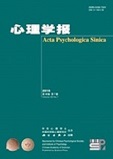Punishment decisions might be guided by the norm of punishment; that is, people will implement their punishment according to the perceived prevalence of punishment in a similar social midst. However, there may be differences between an individual’s perception of norms and actual norms, which is called normative misperception. This article uses four experiments to explore the existence, the direction, and the cause of the normative misperception in third-party punishment, as well as its influence on people’s punitive behaviors.
In Experiment 1, 449 participants were randomized in a four-group factorial design (punishing before estimating, estimating before punishing, punishing only, and estimating only). Experiment 1 consisted of 6 rounds of dictator game, in which participants made punishment decisions for 6 offers and/or estimated the average punishment level of other participants in each offer. Experiment 2 aimed to establish the causal relationship between the normative misperception and the punishment by directly manipulating the normative misperception. Specifically, 134 participants were randomly divided into the overestimation group and underestimation group. After receiving the feedbacks, participants made a punishment decision for an unfair offer and estimated the level of punishment of others in this offer. The purpose of Experiment 3 was to test the model of belief in a just world (BJW)-normative misperception-punishment, as well as the moderating effect of perceived social distance (PSD), with a within-participants design involving 164 participants. The procedure was similar to that of Experiment 1, except that we measured participants’ BJW and PSD before and after the game, respectively. In Experiment 4, we manipulated participants’ BJW through reading materials to test the causal relationship between BJW and the normative misperception.
The results of Experiment 1 showed that there is an underestimated normative misperception in third-party punishment, which leads to a lower level of punishment. Experiment 2 proved that there exists a causal relationship between normative misperception and punishment by directly manipulating the independent variables. Experiment 3 demonstrated that BJW might be an underlying cause of the normative misperception, while PSD moderates the effect of BJW on the normative misperception. Finally, Experiment 4 showed the causal relationship between BJW and the normative misperception, providing additional evidence to the results of Experiment 3.
To sum up, we have found evidence of normative misperception in third-party punishment through 4 experiments. This underestimated misperception might be affected by dual reference points: BJW (internal) and PSD (external). It also shows to a certain extent that third-party punishment is a norm-maintaining behavior rather than a gain-based strategic behavior.




